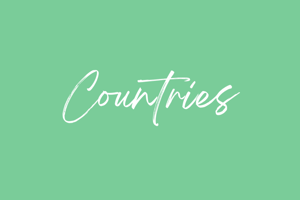Podcast
Questions and Answers
What is the primary responsibility of citizens towards their country in the context of the provided content?
What is the primary responsibility of citizens towards their country in the context of the provided content?
- To defend the country from threats.
- To participate in the government.
- To uphold the values of the country.
- To work and support the government. (correct)
Which of the following is NOT an element of a country, as described in the content?
Which of the following is NOT an element of a country, as described in the content?
- Sovereignty
- Religion (correct)
- Population
- Government
Which branch of the Philippine government is responsible for enforcing and implementing laws?
Which branch of the Philippine government is responsible for enforcing and implementing laws?
- Legislative Branch
- Judicial Branch
- Executive Branch (correct)
- None of the above
What is the reason for enforcing curfew hours for children below 18 years old?
What is the reason for enforcing curfew hours for children below 18 years old?
What is the role of the Judicial Branch in the Philippine government?
What is the role of the Judicial Branch in the Philippine government?
What is the primary characteristic that distinguishes countries from each other, according to the content?
What is the primary characteristic that distinguishes countries from each other, according to the content?
Which of the following is NOT a responsibility of parents when a child under 18 breaks curfew?
Which of the following is NOT a responsibility of parents when a child under 18 breaks curfew?
What is the concept of sovereignty in the context of a country, as explained in the text?
What is the concept of sovereignty in the context of a country, as explained in the text?
Flashcards
Country
Country
A nation with its own government occupying a specific territory.
Population
Population
The number of people living in a country, including citizens and foreign residents.
Territory
Territory
A geographical area subject to the control of a government.
Government
Government
Signup and view all the flashcards
Sovereignty
Sovereignty
Signup and view all the flashcards
Executive Branch
Executive Branch
Signup and view all the flashcards
Legislative Branch
Legislative Branch
Signup and view all the flashcards
Judicial Branch
Judicial Branch
Signup and view all the flashcards
Study Notes
Elements of a Country
- A country is a nation with its own government, occupying a particular territory or place.
- Key elements of a country include: population, territory, government, and sovereignty.
Population
- Population refers to the number of people residing within a country.
- This includes citizens both inside and outside the country's borders.
- Foreigners permanently residing in a country are also considered part of its population.
- Filipino citizens living both inside and outside the Philippines are crucial to its population.
- A country's well-being depends on its citizens working and supporting the government to enhance their lives.
Territory or Place
- Territory/place is a specific geographic area under the control of a state or similar entity.
- It covers the land, water, and airspace associated with that area.
- Sovereignty over a territory is crucial for controlling that area.
Government
- The government is a political system responsible for controlling or regulating a country or community.
- The government enforces laws to regulate people's behavior.
- An example of a law is the curfew hours for children, to ensure protection and compliance.
- The government has various branches. (Note: specific branches are described below)
Sovereignty
- Sovereignty means a fixed government authority, having a set population with control over the use of force within its territory.
Branches of the Philippine Government
- Executive Branch: Implements or enforces the law. The President is at the head of this branch.
- Legislative Branch: Makes and reviews proposed laws (bills). The Congress is the legislative body.
- This further divides into Senate and House of Representatives.
- Judicial Branch: Comprises the judiciary system, including courts and the Supreme Court (highest court) that interprets and applies the law.
Philippine Leaders
-
President of the Philippines: Ferdinand R. Marcos Jr.
-
Vice-President of the Philippines: Sara Duterte
-
(note: Additional details on cities, provinces, municipalities, and barangays are provided in a structural hierarchy chart)
Studying That Suits You
Use AI to generate personalized quizzes and flashcards to suit your learning preferences.





